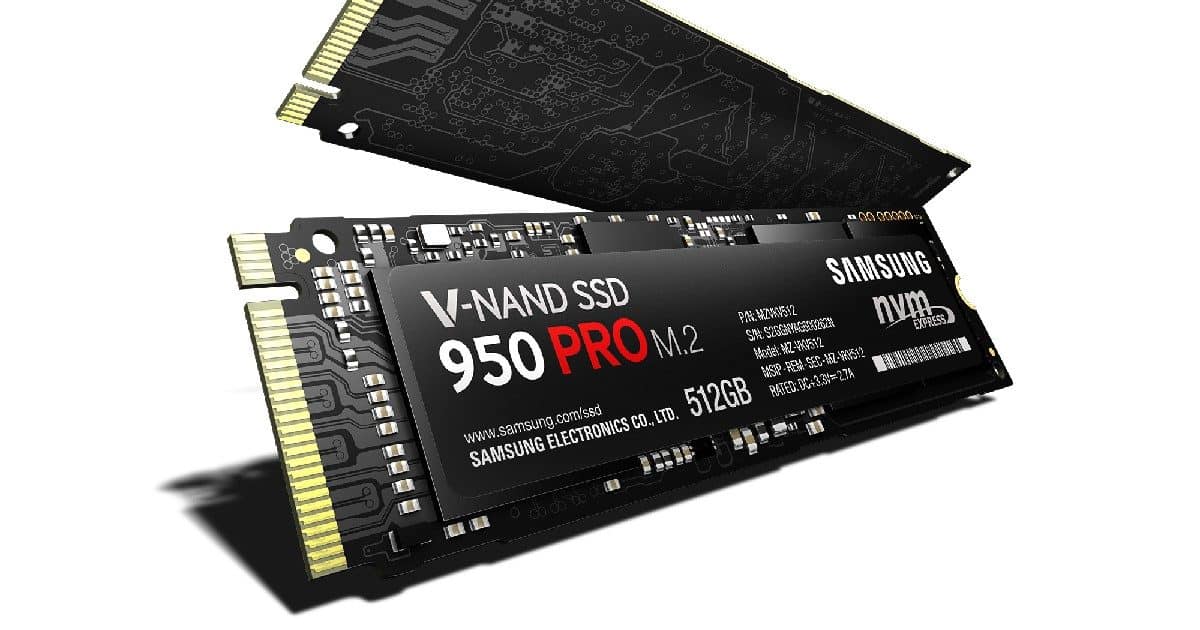With the beta of macOS High Sierra, life is a bit easier for Hackintosh builders using NVMe Solid State Drives. This is unusual, because newer builds of macOS typically increase the difficulty of getting a fully-functional Hackintosh build. Yes, one part of a Hackintosh High Sierra installation is actually easier than on previous versions of macOS.

What’s an NVMe SSD?
This acronym is short for Non-Volatile Memory Express. In short, it’s a newer way to connect storage media through the PCI Express bus. This is much faster than the previous standard of SATA. SATA rates begin at 150MB per second, maxing out at 600MB per second. NVMe, by contrast, is two to three times faster.
Think of an NVMe SSD as a flash memory chip that never loses its data. Such an SSD takes up less space, typically. SSDs are also much faster than traditional hard drives. Moving things over to the PCI Express bus speeds up data transfer even more. The result is an operating system (like macOS) that fully boots up in less than 10 seconds. The OS continues to speed along much faster than otherwise.
Was NVMe Hard to Do on Hackintosh Before?
It wasn’t difficult, per se, but it was harder than it should have been. That’s no longer the case for a Hackintosh High Sierra installation.
Apple’s driver for NVMe, IONVMeFamily, used to be very specific, and only worked for the particular SSD devices and controllers that Cupertino installed in its line of products. If you weren’t using that specific device (and sometimes, even that specific type of NVMe controller), you had to hack and patch things to make them work.
Noted Hackintosh developer RehabMan (who also wrote some of the Nvidia drivers used on Macs and Hackintosh builds) developed a method to patch IONVMeFamily to make it play nicely under macOS Sierra with HackrNVMeFamily, a third-party driver for NVMe. This is what allowed me to initially get support for the NVMe SSD inside my current Hackintosh project, an HP Z2 G3 Mini Workstation named Hax0rb3ast.
The State of NVMe in Hackintosh High Sierra
When I installed the macOS High Sierra first developer beta on Hax0rb3ast, I no longer needed HackrNVMeFamily. I found this out in the middle of the night, completely by accident, when I forgot to inject those drivers into my USB installation disk. It appears that, for a change, Apple has opened up its driver capabilities to allow a more robust selection of NVMe SSD controllers and drives to work under macOS. That makes one aspect of building a Hackintosh much easier. It’s still no simple task, but it’s one less thing to worry about, thankfully.
The Developer Beta of macOS High Sierra is available now. If you aren’t a developer but want to create your on Hackintosh High Sierra build, Apple announced a Public Beta set to begin in June.
Dear Jeff,
Great article. Please share success hackintosh HP z2 mini g3.
Great. Apple should use standard connectors and ports, not soldered components that can be upgraded by users. And not charge 2 to 3 times more for the very same component like RAM. Check out that for new iMac on Apple Store and sites like Amazon (3 times more expensive on the former).
If you use a 4-lane PCIe slot in the cheese grater Mac Pro then you are limited to a real world throughput of around 1500MBps. If you use one of the two 16-lane PCIe slots then you can as you said achieve 6000MBps aka 6Gbps.
Whilst the fact the cheese grater only supports PCIe 2.0 is currently not a limitation for SSD drives it already is starting to be so for newer higher end video cards. I would say we are now reaching the stage where it is also becoming a limitation for storage or will at the next step.
Since the classic Mac Pro cannot boot from an NVMe drive most people use AHCI drives. To get the 6Gbps you can use the Amfeltec Squid PCIe adapter and use RAID0 to stripe across four AHCI drives and get close to the theoretical 6000Mbps. See http://barefeats.com/hard220.html
(There is a driver that allows using NVMe drives as data i.e. non-boot drives in the old Mac Pro.)
Apparently with NVMe drives becoming the new i.e. current standard older AHCI ones are starting to get scarcer and actually more expensive despite being older slower tech.
Nice article Jeff. I wonder what the max speed of each of these connectors is. I *think* for nVME its around 4GBps, and for M.2/PCI its around 1.6GBps. The sad thing is I think these connectors are already dated and a problem. I think some of apple’s top end models get around 3GBps through put. But you can get PCI cards on the now ancient cheese grater mac pro that do around 6GBps. Which may explain why apple has been all over the map with its SSD connectors…